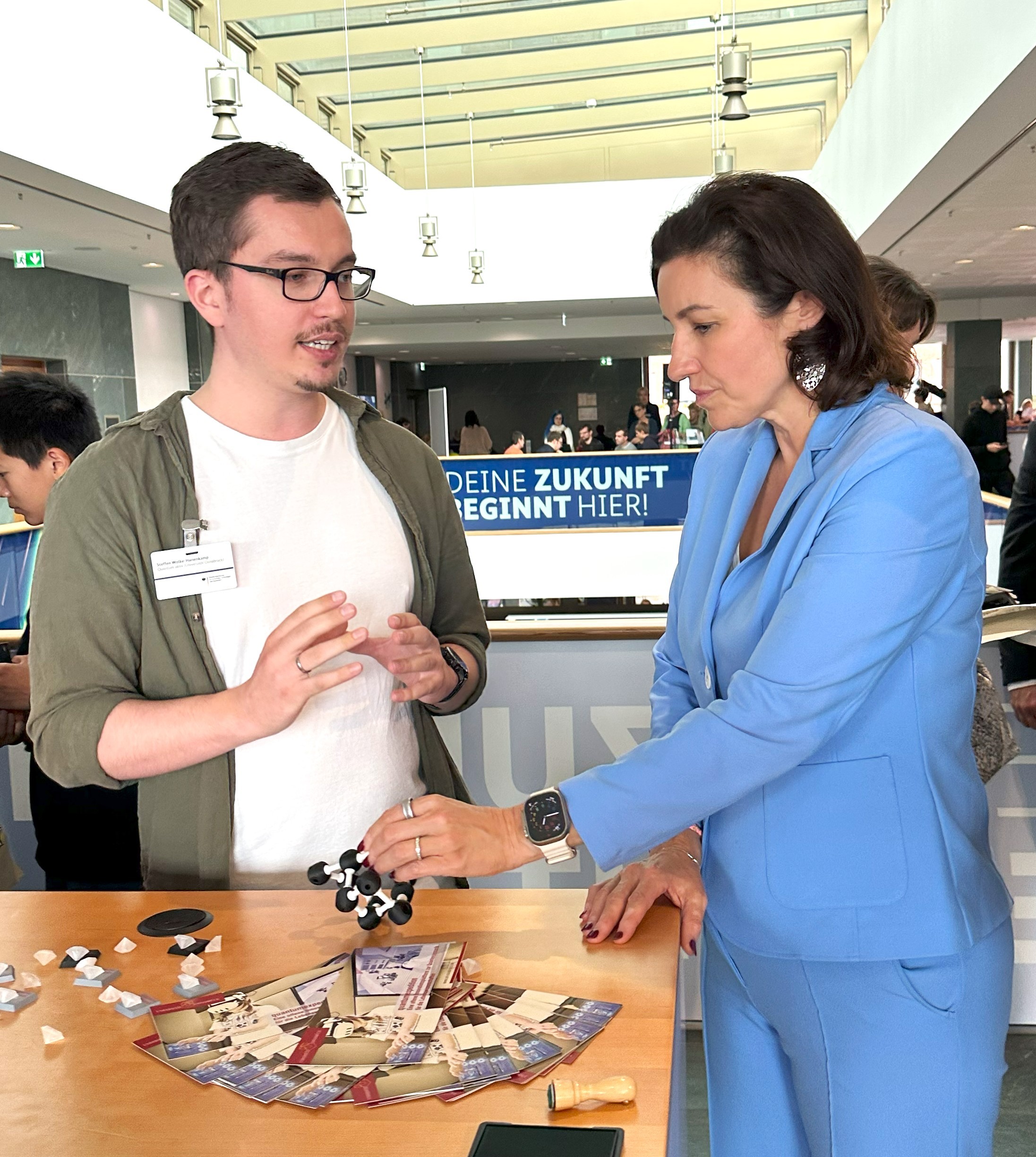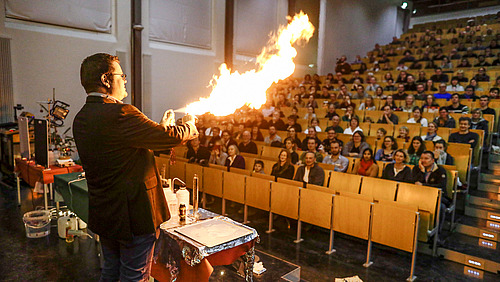Federal Science Minister Dorothee Bär was one of the first to take the opportunity to see the interdisciplinary research project and Osnabrück's research activities in person on August 23 and 24.
The interdisciplinary research collaborations and joint projects between physics, chemistry and biology at Osnabrück University are closely linked to the research building for cellular nanoanalytics (CellNanOs) on the Westerberg campus and are closely linked via a shared equipment center.
For the demonstration, laser, synthesis and cell preparation laboratories in the research building were digitized and made accessible and experimentally tangible using virtual glasses. "In our virtual research building, nanodiamonds can be synthesized, the quantum physical origin of optical signalling can be studied in a laser setup and the preparation of individual cells through to the imaging of cells with a quantum microscope can be carried out independently and interactively," says ultrafast physicist Prof. Dr. Mirco Imlau, who is the coordinator of the associated interdisciplinary research project quantumexpedition. "Overall, the interest and enthusiasm of numerous visitors across all age groups was particularly high this weekend," reports Steffen Wolke-Hanenkamp enthusiastically, who is working on the biophysical aspects of the project. From the many conversations with interested parties, it became clear that the "highly interdisciplinary collaboration between quantum physicists, chemists and cell biologists" was particularly impressive, adds Eugen Wolf, who is supporting the project from a physicochemical perspective as a doctoral student in the Osnabrück-based interdisciplinary DFG Research Training Group RTG2900 'nanomaterials@biomembranes'.
With the quantumexpedition research project funded by the BMFTR, the members of the Imlau research group are impressively demonstrating the importance of interdisciplinary research in modern science and how new technologies can bring current research to life and arouse enthusiasm for the natural sciences among young and old alike. The project is being carried out by the Institute of Physics of the School of Mathematics/Computer Science/Physics and the School of Biology/Chemistry together with the company Eureca Messtechnik GmbH (Cologne) and is being funded with a total volume of 1.26 million euros until the end of 2026.
Further information for editorial offices:
Prof. Dr. Mirco Imlau, Osnabrück University
School of Physics
mirco.imlau@uos.de




